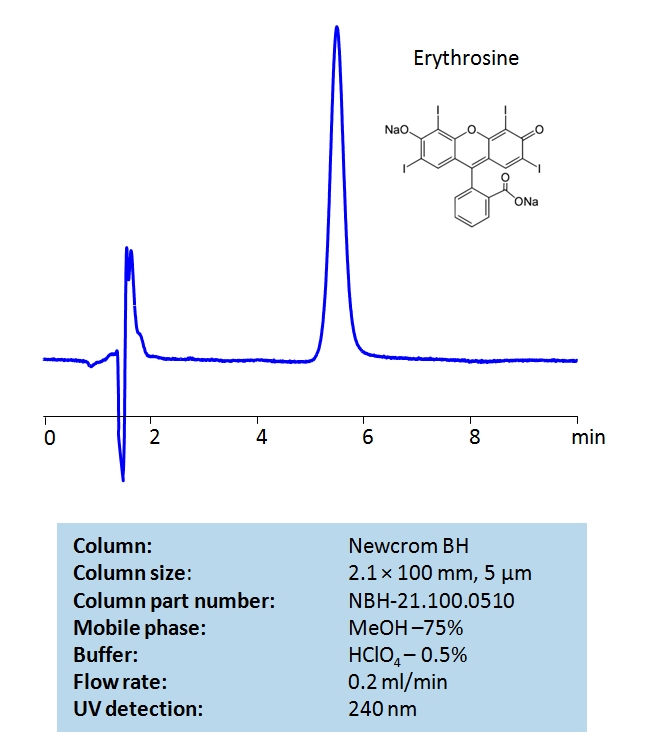HPLC Method for Erythrosine on Newcrom BH by SIELC Technologies
High Performance Liquid Chromatography (HPLC) Method for Analysis of Erythrosine
Erythrosine (also known as Red #3) is a fluorescent red acid dye used for food coloring, pharmaceutical dye, in printing inks, as a biological stain, and as a dental plaque disclosing agent. It is banned in the european union for health risks. It has the chemical formula C20H6I4Na2O5.
Erythrosine can be retained on HPLC mixed-mode Newcrom BH column using a mobile phase consisting of methanol (MeOH) and water with perchloric acid (HClO4) buffer. The analysis method can be UV detected at 240 or 498 nm.
| Column | Newcrom BH, 2.1 x 100 mm, 5 µm, 100 A, dual ended |
| Mobile Phase | MeOH/H2O – 75/25% |
| Buffer | HClO4 – 0.5% |
| Flow Rate | 0.2 ml/min |
| Detection | UV 240, 480 nm |
| Class of Compounds | Acid, Dyes |
| Analyzing Compounds | Erythrosine |
Application Column
Newcrom BH
Column Diameter: 2.1 mm
Column Length: 100 mm
Particle Size: 5 µm
Pore Size: 100 A
Column options: dual ended






